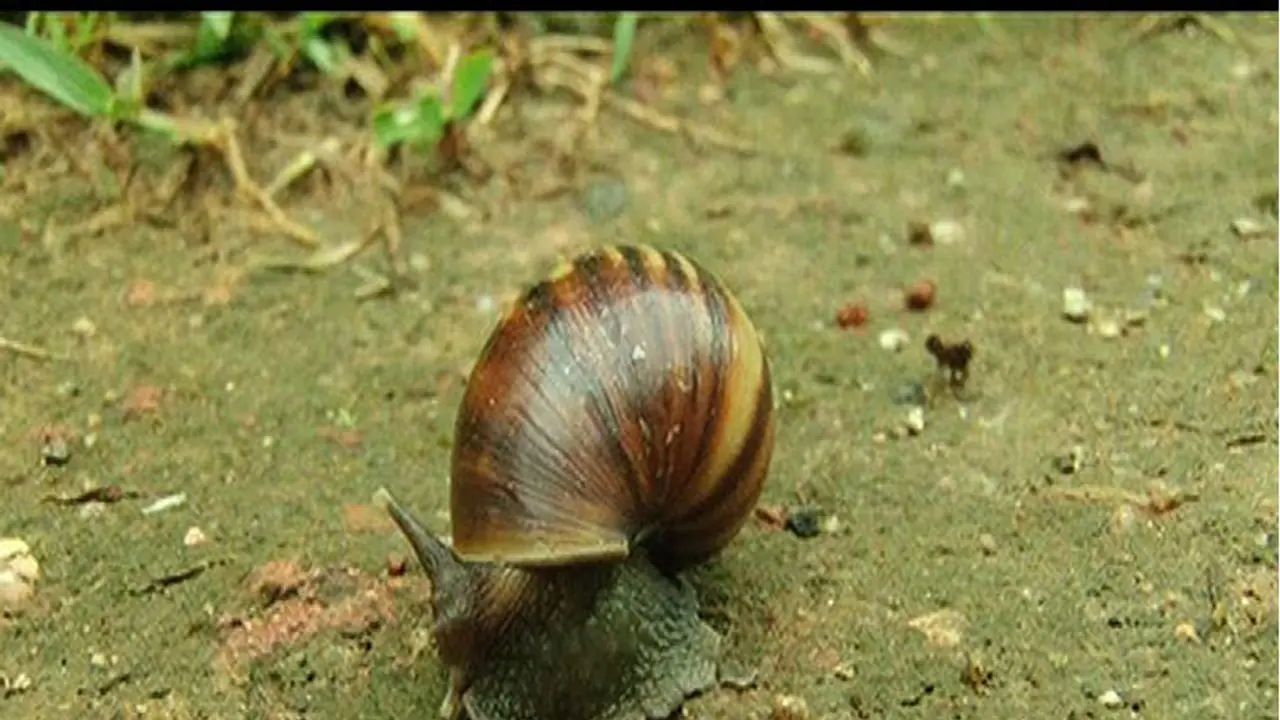The giant African snail is a disturbing pest in many parts of Kerala, especially in coastal towns. After seasonal slumber beneath the ground, they swarm into canals and vegetable gardens, clog pipes and invade kitchens. Civic bodies and voluntary organisations often take up drives to collect and kill these pests by dousing them in sea salt. Rumours that these snails carry a deadly worm have made them one of the most detested creatures in Kerala.

But a meeting on Monday in Kochi kicked up a heated debate among scientists on the snails. During a meeting convened to discuss measures to curb the population of the snails, scientists of the Central Marine Fisheries Research Institute (CMFRI) and Kerala University of Fisheries and Ocean Studies (KUFOS) suggested that the snails are edible!
"It is a good source of protein. We can find ways to control its invasion by making useful products from the snail," said Devika Pillai of the CMFRI.
KV Thomas MP, who chaired the meeting, entrusted the CMFRI to come up with proposals to make use of the snail meat and to explore export potentials. CMRI's Krishi Vigyan Kendra (KVK) also suggested that it can be used as bio-manure and feed for ducks.
It is a good source of protein. We can find ways to control its invasion by making useful products from the snail, Devika Pillai, CMFRI
But the scientists of Kerala Forest Research Institute (KFRI) strongly warned against being 'fooled' by the reports that the giant snails are edible.
"It is not consumed anywhere in the world as Angiostrongylus Cantonensis, a nematode parasite, present in its mucus and body can cause meningitis in humans," said TV Sajeev, head of Forest Division of KFRI said.
The snails have become a permanent headache across the state during the monsoons when they begin their attack on vegetation and buildings. The giant mollusc is identified as one of the hundred worst invasive species in the world.
It is not consumed anywhere in the world as Angiostrongylus Cantonensis - a nematode parasite- present in the mucuscs can cause meningitis in humans," T V Sajeev, KFRI.
It was in 2005 that the invasion of the giant snail was first reported in the state. It is believed that the mollusc may have found its way to the state from Myanmar along with timber imports. The depot at Willington Island in Kochi, where imported wood is offloaded, has been heavily infested with the snails for quite a few years.
However, there is a possibility that it was a scientist's mistake that led to the introduction of the snail in the state. A researcher named PN Radhakrishnan of Palakkad, brought the snail for research from East Africa in 1955. The snail population increased by 1975, but for unknown reasons they remained harmless till 2005.
Giant African snail is a hermaphrodite, so one snail is enough to breed and lay eggs, and they lay up to 1200 eggs a year. This is an exotic species and it’s only known natural predator is the larva of the firefly.
